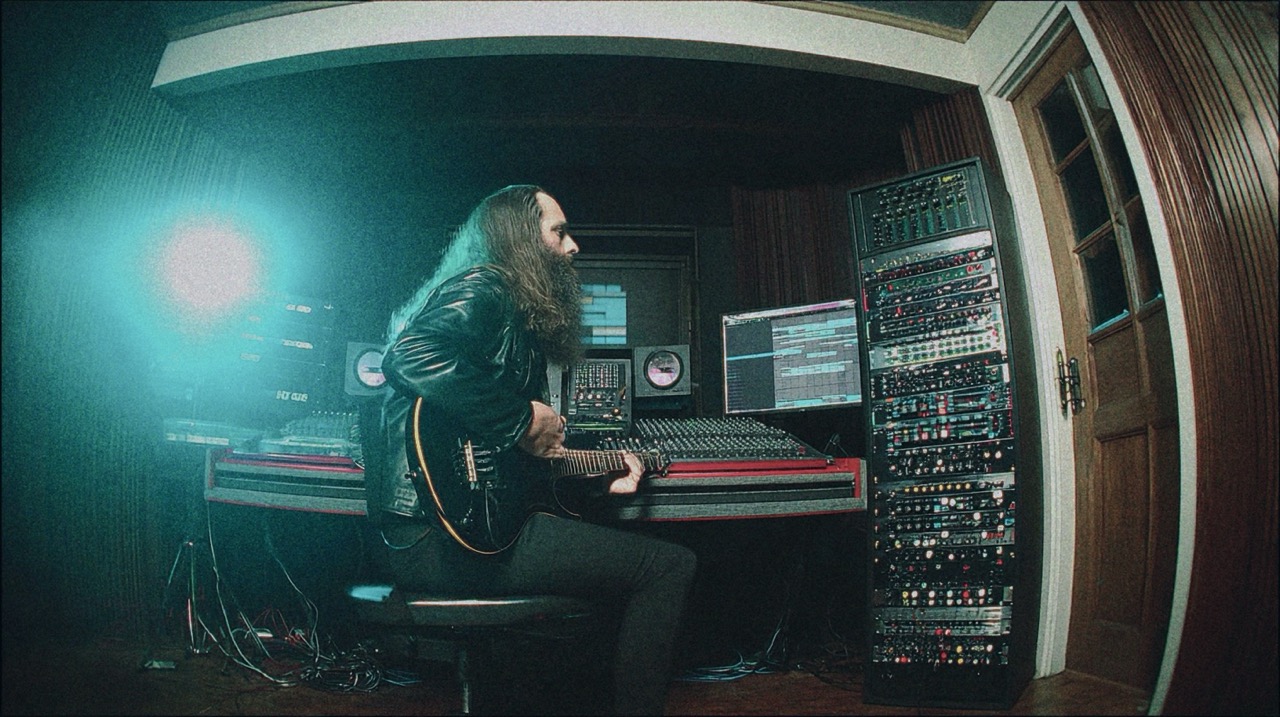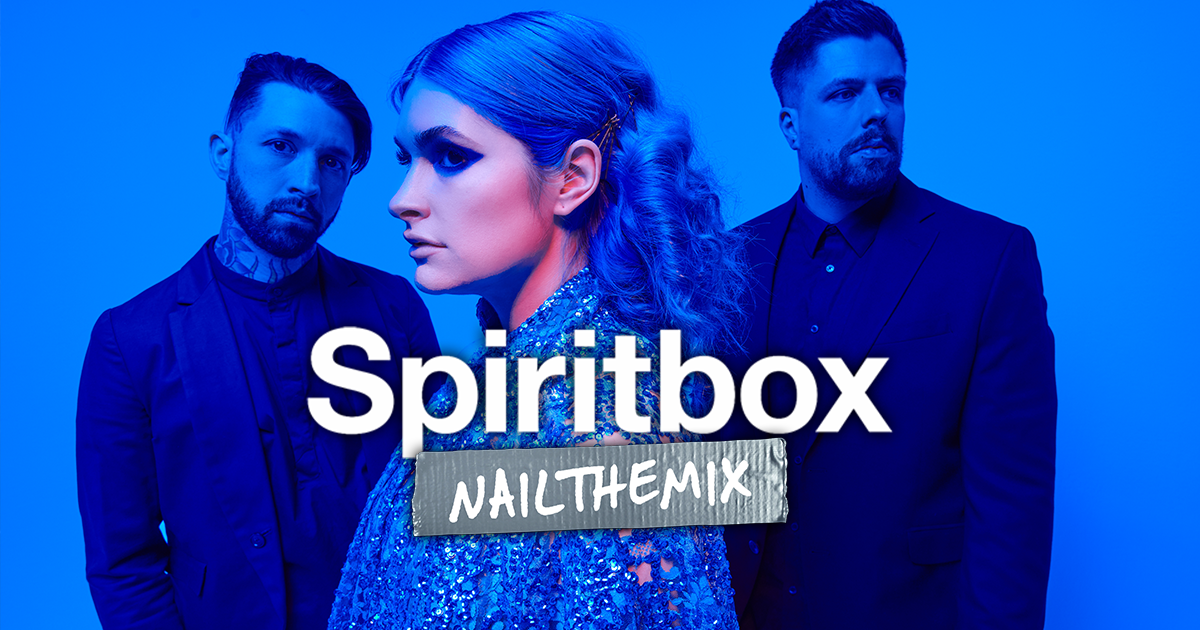
AI Mastering: What Metal Producers Actually Need to Know
Nail The Mix Staff
Let’s talk about a buzzword that’s been creeping into every corner of the creative world, including ours: AI. Specifically, AI mastering. You’ve probably seen the ads, maybe even clicked on a link promising a pro-sounding master in minutes. But when it comes to metal – with its crushing guitars, thundering drums, and vocals that can range from guttural roars to soaring melodies – can a robot really get the job done? Or is it just another piece of tech that sounds cool but falls flat when faced with a truly punishing mix?
The truth, like most things in audio, is somewhere in the middle. AI mastering isn’t a magic bullet, but it’s not entirely useless either. For us metal producers, it’s about understanding what these tools are, what they do, and how (or if) they can fit into a workflow that demands power, clarity, and serious attitude.
What Exactly IS AI Mastering Anyway?
So, what’s under the hood when we talk about “AI mastering”? Essentially, it’s software that uses algorithms, often trained on thousands (or millions) of commercially released songs, to analyze your uploaded mix. Based on this analysis, and sometimes your input like “genre” or “intensity,” it automatically applies a mastering chain.
This chain typically includes usual suspects like:
- EQ: To balance frequencies.
- Compression: To control dynamics and add punch.
- Limiting: To bring up the overall loudness to competitive levels.
- Stereo Widening: To adjust the perceived width of your track.
- Harmonic Excitation/Saturation: Sometimes, to add a bit of vibe.
The “AI” part comes from how the software makes decisions about what settings to use for each processor. It’s trying to mimic what a human mastering engineer might do, but based on patterns it has learned from its dataset. Think of it like a super-fast assistant who’s heard a lot of music but maybe doesn’t quite get the specific brand of organised chaos you’ve just cooked up in Reaper or Pro Tools.
AI Mastering Tools Metal Producers Might Encounter
You’re gonna see AI mastering pop up in a few different forms. Some are standalone services, others are baked right into plugins you might already own.
Online AI Mastering Platforms
These are probably what most people think of first. Services like:
- LANDR
- eMastered
- CloudBounce
- BandLab Mastering
The workflow is usually dead simple: you upload your stereo WAV file, maybe pick a “style” (if “Brutal Death Metal” is even an option, which it often isn’t), select an intensity (e.g., “Loud”), and it spits back a mastered version.
The Good:
- Speed: You can get something back in minutes. Great if you need to quickly get a demo to your bandmates or check how your mix translates with some loudness.
- Accessibility: No need for fancy gear or deep mastering knowledge to get a basic result.
- Cost-Effective (sometimes): Many offer free tiers or per-track pricing that can be cheaper than a human for quick jobs.
The Not-So-Good for Metal:
- Generic Sound: Metal is diverse. The ideal master for a sludgy doom track is worlds apart from a hyper-polished modern metalcore banger. These platforms often aim for a “commercially acceptable” sound that can sand off the rough edges we actually like in metal.
- Lack of Control: You get what you get. Tweaking specific parameters is often limited or non-existent. What if it boosts 2kHz too much and makes your cymbals sound like tin foil? Tough luck.
- Dynamic Destruction: Metal needs to hit hard. While these services can make things loud, they might achieve it by simply brickwall limiting everything, sucking the life out of your kick and snare transients.
Plugin-Based AI Mastering Assistants
This is where things get a bit more interesting for us hands-on producers. The big player here is iZotope Ozone with its Master Assistant.
Instead of uploading to a website, you run Ozone as a plugin on your master bus in your DAW (Logic Pro X, Cubase, Studio One, etc.). The Master Assistant analyzes your audio in real-time and then suggests a complete mastering chain using Ozone’s various modules (EQ, Dynamics, Imager, Maximizer, etc.).
The Good:
- Integration: It’s right there in your project. You can A/B it easily.
- Transparency & Tweakability: This is huge. Ozone shows you exactly what settings it’s suggesting for its EQ, Compressor, Limiter, etc. You can see the curves, the thresholds, the attack/release times. And crucially, you can change them. If the AI suggests a cut at 300Hz in your guitars but you think it’s too much, you can reduce it or bypass that module entirely.
- Learning Tool: Seeing what the AI suggests can be educational. “Hmm, it wants to put a dynamic EQ band on my low-mids to tame some boominess on palm mutes. Interesting.” You can then dive deeper into why it made that choice.
- Targeting: Ozone’s Assistant allows you to load reference tracks or select genre targets (though “Metal” is still pretty broad). This gives it a slightly better chance of getting in the ballpark.
The Not-So-Good (Still):
- It’s Still an Algorithm: While more flexible, it’s still making decisions based on code. It doesn’t feel the music. It might smooth over aggression you intended or try to “fix” something that’s a stylistic choice in your subgenre.
- Preset-y Feel: Even with tweaking, the starting points can sometimes feel a bit generic if you’re not careful.
The Big Question: Can AI Really Master Metal?
This is where the rubber meets the road, or rather, where the digital limiter meets your blast beats. Metal has unique demands that generic AI approaches often struggle with.
The “Loudness War” and Metal’s Demands
Yeah, we want our metal loud. But there’s loud, and then there’s crushed. AI mastering tools are generally programmed to hit certain LUFS (Loudness Units Full Scale) targets to be “competitive.” An AI might slam your mix into a limiter like Ozone’s Maximizer or even something emulating a FabFilter Pro-L 2, hitting -7 LUFS, but if it does so without understanding the dynamics of your double-kick pattern or the impact of a breakdown, it can sound flat and lifeless. Achieving loudness in metal while retaining punch is an art. For more on how to manage this carefully, check out our deep dive into the difference between limiting vs. clipping for mastering.
Nuance, Aggression, and That “Human Touch”
Think about the subtle EQ moves that make a metal mix work. That surgical cut to remove guitar fizz around 6-8kHz without losing aggression, or the precise boost at 80Hz to make the kick drum connect with the bass guitar. Can an AI truly understand the intent behind these frequencies? Often, AI EQs might apply broad strokes when metal needs a scalpel. It might try to “balance” frequencies in a way that smooths out the very aggression you worked so hard to mix in. Understanding these critical EQ moves is paramount, something we see in action when breaking down a professional’s setup, like in this metal mastering in-the-box chain breakdown.
It’s similar to the challenges with AI image generation tools like Midjourney, Nano Banana, or Meta AI.
A human mastering engineer listens for the feeling. Does the snare cut through without being painful? Do the guitars have weight and clarity? Does the breakdown hit you in the chest? These are subjective, artistic decisions that current AI isn’t really equipped to make, like applying a subtle compression trick for polish rather than just squashing the signal.
Subgenre Specifics: A Bridge Too Far for AI?
Is the AI trying to master your raw, lo-fi black metal track like it’s a polished Periphery record? Or is it trying to make your djent mix sound like old-school Metallica? The aesthetic differences between metal subgenres are vast.
- Old School Death Metal: Might need a bit more grit, less polish, maybe even some tape saturation characteristics.
- Modern Prog/Djent: Often demands extreme clarity, tight low-end, and a very wide stereo image.
- Symphonic Metal: Needs space for orchestral elements alongside the heavy guitars and drums.
AI mastering typically works with broader genre profiles like “Rock” or, if you’re lucky, a generic “Metal.” It’s unlikely to have the nuanced understanding to cater to these specific subgenre needs without significant human guidance.
Practical Ways Metal Producers Can Use AI Mastering Tools
So, it’s not all doom and gloom (unless that’s your subgenre, of course). AI mastering tools can have a place, especially if you treat them as assistants rather than replacements.
As a “Second Opinion” or Starting Point
This is probably the most valuable use for tools like Ozone’s Master Assistant. Run your nearly-finished mix through it and see what it suggests.
- Don’t just hit “Accept.” Analyze its choices.
- “Why did it try to cut 3dB at 250Hz with a dynamic EQ on the master?” Maybe your low-mids are a bit muddy from the guitars and bass clashing.
- “It’s suggesting a 1.5dB shelf boost at 10kHz.” Are your cymbals or overall air a bit dull?
- “It wants to narrow the low-end below 150Hz and widen the highs above 3kHz.” This is a common mastering technique – is your mix lacking focus or width?
Use its suggestions as a jumping-off point for your own mastering decisions. You might try its EQ curve, then adjust the Q, gain, or frequency yourself. You can even compare its choices to how a pro might set up a mix bus for metal and see where the philosophies differ.
For Demos and Pre-Production
Need to send a quick bounce to your bandmates so they can learn their parts? Or submit a demo to a small label or promoter? An AI master can quickly get your track to a listenable loudness and general balance. It’s often better than sending out a quiet, unbalanced mix. Just don’t mistake it for a final, releasable master.

100+ Insanely Detailed Mixing Tutorials
We leave absolutely nothing out, showing you every single step
Learning and Ear Training
If you’re still learning the ropes of mastering, seeing what an AI tool like Ozone’s Master Assistant does can be insightful.
- Pay attention to the types of processing it applies (e.g., “Oh, it’s using multi-band compression on the low end and a vintage limiter for character”).
- Compare its version to your own attempts. What did it “hear” or try to “fix” that you didn’t? This can help train your ears to identify common mix issues.
When Budget is Zero and You Need Something
Let’s be real, professional mastering costs money, and for good reason. But if you’re a bedroom producer just starting out and the budget for your passion project is literally zero, a carefully tweaked AI master is probably better than releasing a completely unmastered track that’s quiet and dynamically all over the place. The key here is “carefully tweaked” – use something like Ozone’s Assistant, understand its suggestions, and adjust them to taste. Don’t just rely on a one-click online service if you can avoid it.
The Bottom Line: AI Mastering in Your Metal Workflow
AI mastering tools, especially plugin-based ones like iZotope Ozone’s Master Assistant, are becoming pretty sophisticated. They’re not the sentient robot mastering engineers of sci-fi movies, but they can be useful aids.
For metal, they’re best used as:
- A starting point: Get some initial ideas for EQ, compression, and limiting.
- A learning tool: Understand why certain moves are suggested.
- A quick solution for demos: When “good enough for now” is actually good enough.
They are not a replacement for experienced ears, a deep understanding of your subgenre’s aesthetic, or the ability to make artistic decisions that serve the song. The aggression, the impact, the feel of a killer metal master still comes down to human skill and intent.
Ultimately, the better your mix, the better any mastering process (AI or human) will turn out. If you’re serious about getting your metal tracks to hit hard and sound professional from the ground up, understanding the fundamentals of a powerful mix and the difference between mixing vs. mastering is non-negotiable. That’s exactly what we focus on at Nail The Mix, where you can learn from raw multitracks and see how world-class producers get those crushing tones before it even hits the mastering stage.
So, experiment with AI mastering tools, see what they can do for you, but always trust your ears and your gut. They’re still the best tools you’ve got.
Get a new set of multi-tracks every month from a world-class artist, a livestream with the producer who mixed it, 100+ tutorials, our exclusive plugins and more
Get Started for $1




